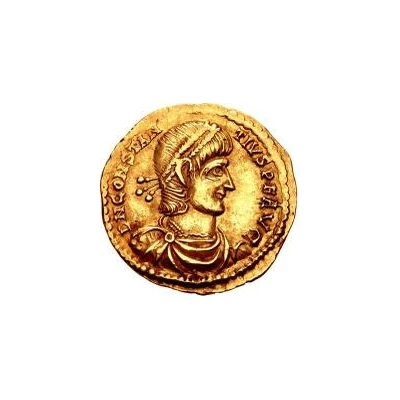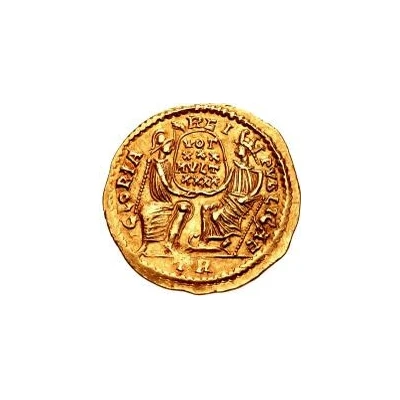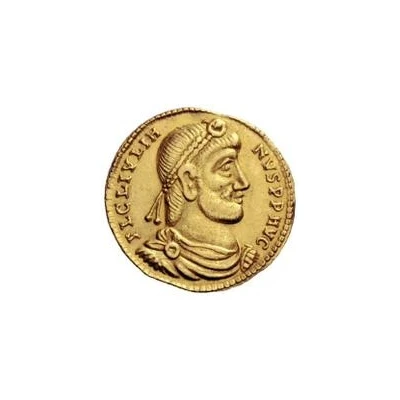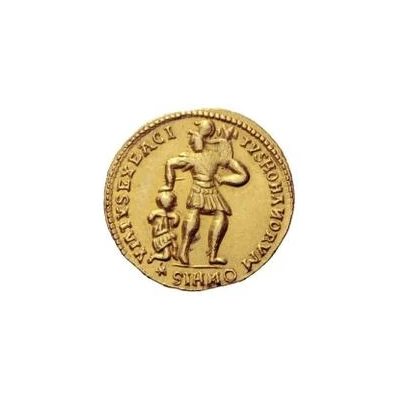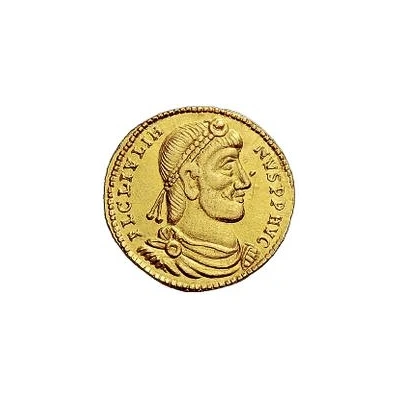
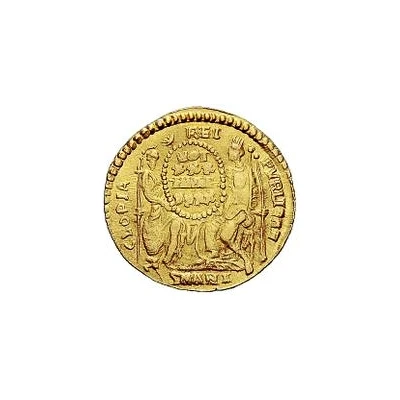

© Numismatica Ars Classica NAC AG
1 Solidus In the name of Julian II
| Gold | 4.06 g | 20 mm |
| Issuer | Uncertain Germanic tribes |
|---|---|
| Type | Standard circulation coin |
| Years | 361-362 |
| Value | 1 Solidus |
| Currency | Solidus (circa 301-750) |
| Composition | Gold |
| Weight | 4.06 g |
| Diameter | 20 mm |
| Shape | Round (irregular) |
| Technique | Hammered |
| Demonetized | Yes |
| Updated | 2024-10-04 |
| Numista | N#153496 |
|---|---|
| Rarity index | 97% |
Reverse
Two people seated with stacked legend between them, all surrounded by legend.
Script: Latin
Lettering:
CLOPIA - REI - PVRLIENE
VOT
XXX
MVLT
XXXX
SMANI
Translation:
Gloria Rei-publicae / Votis Tricennalibus Multis Quadragennalibus
Glory to the state / Vows for the thirtieth anniversary and more for the fourtieth anniversary
Edge
Plain
Comment
This coin is imitating an issue from the Antioch mint, and is said to be made after 361. This seems to be a ficticious design for a Julian II (361-363) piece.Due to this piece having such a similar reverse design to the solidus piece from the Uncertain Germanic Tribes struck in the name of Constantius II (337-361), those two coins were most likely struck by the same tribe. With that being said, if this tribe switched the ruler whose name these coins were struck under, it is possible these coins were struck during the rulers' lifetimes, meaning the latest this piece could have been struck was 363.
Only four examples of this piece are known, and with this design being ficticous, it is possible this coin's obverse design was changed to reflect Julian II's ascent to power, while the reverse design was kept the same. Because there is another solidus piece from the Uncertain Germanic Tribes struck in the name of Julian II who uses the same obverse die, yet uses a different reverse design, it seems likely that this coin was only struck for a short time before the dies were changed.
With this coin having the same obverse die as the other solidus struck in the name of Julian II, those two coins would have come from the same tribe.
Interesting fact
One interesting fact about this coin is that it was minted during the reign of Julian II, also known as Julian the Apostate, who was the last pagan Roman Emperor. Despite his efforts to restore paganism, Christianity continued to spread and eventually became the dominant religion of the Roman Empire. This coin, bearing his name, serves as a reminder of the religious and political changes that took place during his reign.
